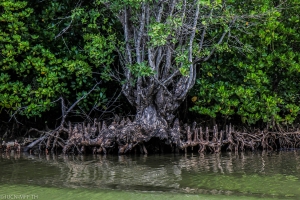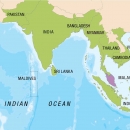Newsroom :: News :: Special Meeting of IUCN Regional Directors discusses replication of Mangroves for the Future Initiative beyond Asia
Special Meeting of IUCN Regional Directors discusses replication of Mangroves for the Future Initiative beyond Asia
Location: Bangkok, Thailand. 5th Jun 2013
The meeting sought to reach a common understanding on the key elements of MFF that sets it apart as a unique integrated coastal management initiative. It aimed to identify the potential links between MFF and other IUCN coastal initiatives beyond Asia in helping develop effective cooperation between regional and global coastal initiatives. The meeting, which was a first of its kind in bringing together IUCN Regional Directors to discuss MFF, was successful in generating ideas exploring areas for synergy among the regions, and with the new IUCN Global Coasts Initiative.
A series of presentations were made to describe the MFF Asia "model" and its growth curve from starting out as a post 2004 Indian ocean tsunami response to developing into an overarching coastal initiative building resilience of ecosystems and dependent communities. As it prepares to launch the third phase of its programme from 2014, MFF has announced the dates for its 10th Annual meeting of the Regional Steering Committee meeting in Viet Nam.
Chairing the meeting Aban Marker Kabraji (IUCN Asia Regional Director) stated that although MFF has developed in Asia it has generated increasing interest from other regions, especially Africa and the Pacific. Stressing on the hallmarks of the MFF brand and possibilities of trans-boundary collaboration she said "An understanding of MFF – its key elements and the “formula” that makes it work - may still be less well known outside the Asia Region. It is important to analyze the “MFF Brand” and discuss how to maintain the brand’s identity and integrity, while seeking to adapt it and expand its use into other regions."
The meeting was represented by other regional coastal initiatives like The IUCN East and Southern Africa Region (ESARO), The IUCN West Africa Region (PACO), The IUCN Oceania Region (ORO), IUCN Central America (ORMA), IUCN Global Species programme, Glocal Marine and Polar Programme, partners UNDP, UNEP and MFF Donor SIDA. It was agreed that the governance structure of MFF, with its wide civil society representation and reach, is one of its key strengths and replication of the MFF model in other regions will require that the MFF governance model is fully adopted along with consideration of the evolution of structural elements and implementation measures within MFF.
Participants generally agreed on the importance of continued networking between regions and global programmes to strengthen and, where possible, scale up efforts to address both threats and opportunities facing coastal ecosystems. Assistance from the Asia region, would help to reduce the “learning curve”, but investment in bulding similar programs in other regions following MFF’s main principles and procedures, would be a sound and necessary investment for IUCN.

